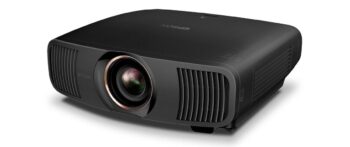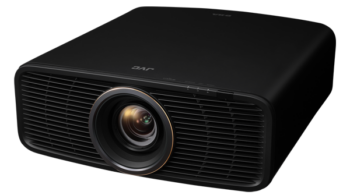

Since Oppo left the disc-player space in 2018 to focus on smartphones, it feels like we haven’t seen a ton of new high-end Ultra HD Blu-ray players hit the market, particularly at the price points Oppo’s two Ultra HD Blu-ray disc players once sat.
Enter Reavon, a relatively new name in the consumer electronics space. But don’t let the unfamiliar name deceive you. Its parent company, Zappiti, has been designing and manufacturing professional grade audio-video playback and management systems for quite some time now. And with the exit of Oppo from the high-end disc player market, the company saw an opportunity to manufacture premium disc players to fill the void Oppo’s players left.
The Reavon UBR-X100, priced with an MSRP of $799, supports disc playback of Ultra HD Blu-ray, 3D Blu-ray, Blu-ray, DVD, DVD Audio, and of course CD. It can also playback files connected locally or over your home network through DLNA. Most common audio and video file formats are supported, such as popular ones like MKV, M2TS, FLAC, DSF, and MP3. The X100 has support for both HDR10 and Dolby Vision HDR formats which are, by far, the two most common HDR formats used throughout Hollywood.
Build quality overall is excellent. I particularly liked the high quality, tactile feel of the buttons on the front panel. The display is dimmable, with a font that is large and easy enough to read from far away. Reavon says the X100 uses a 3 millimeter-thick steel plate for the electronics and disc drive to sit on, which sits on top of the 1.3 millimeter-thick steel outer chassis. Not only does this make the case far more rigid, it also significantly reduces the amount of noise let out of the case when the disc drive is spinning. Suffice it to say, this is a very quiet disc player.
For connections, you’ll find a main and audio-only HDMI 2.0 output, an RJ45 ethernet port, an optical and coaxial SPDIF port, and a pair of USB 3.0 ports – one found on the front of the case and the other on the back. The included remote is large, with direct access to pretty much every feature or setting you’d want easy access to. It’s also backlit, which is super handy to have in a dark home theater. There’s no analog audio outputs. For that, you’ll have to step up to Reavon’s flagship UBR-X200, priced at $1,699, which is essentially the same player as the X100, except it comes with a high quality DAC and multi-channel pre-amp section, as well as SACD playback support.
Setup
When powering up the unit for the first time, you’re greeted with a simple, snappy and intuitive user interface. You have options to load your disc or to playback A/V files, either connected locally or through DLNA. Speaking of which, there’s no WiFi built into the player as far as I can tell, so you’ll need to make sure you have an ethernet cable routed to wherever you’re installing the player, otherwise this will be strictly a disc-only player. And similar to players from Oppo and Pioneer, there’s no built-in streaming app support like you get from brands like Sony and Panasonic.
In the settings menu, you’ll have access to set things like the output bit depth and chroma subsampling rates, as well as audio options to set the player to bitstream or output PCM audio. Connected to my LG B8 OLED TV, I did have to set the HDR10 and Dolby Vision settings to ‘On’ and ‘Forced’, respectively, for these formats to be output and correctly recognised by the TV. So you may want to check on these settings as well, otherwise the player might output a tone mapped HDR-to-SDR version of the video content like it did in my situation, which looked decidedly worse than the correctly output HDR10 and Dolby Vision video.
The X100 also loads discs insanely fast. This is no doubt in part thanks to the high performance, quad-core ARM Cortex-A53 CPU found inside. With a disc already in the tray, I set a stopwatch to see how long it took to power the unit on from standby until movie playback began on my television. It only took 40 seconds for this to happen, which incidentally was about a minute faster than it was to find and stream the same movie on Netflix through the streaming app built in to my LG TV.

Performance
With my copy of Spears & Munsil’s UHD HDR Benchmark loaded in the tray, I ran the X100 through my regular battery of test patterns and demo material found on this disc. The player features the Mediatek MTK8581 SoC for decoding and rendering, which is the same chipset found inside Oppo’s Ultra HD Blu-ray players. Overall, test patterns revealed excellent video processing and rendering performance. In particular, I was impressed with how the X100 handled the chroma upscaling and chroma zone plate test patterns, which showed better performance than my reference Panasonic DP-UB9000. Better performance with these test patterns means that normal video content should look a bit sharper and more resolved overall.
Test patterns also revealed that video upscaling performance is quite good among Ultra HD Blu-ray players near this price point. I loaded up my copy of Cloud Atlas on Blu-ray to see how its 1080p-to-4K upscaling performed with this movie and I was happy to see that the image was devoid of common upscaling and image refinement pitfalls, like obvious ringing artifacts or aggressive noise filtering. On screen, the image consistently looked natural and honest.
To test out 4K HDR performance, I loaded up my copy of The Fifth Element on Ultra HD Blu-ray. This recently remastered 4K version of the film features a very nice, high bitrate transfer that was graded in Dolby Vision HDR. Similar to my experience with the test patterns, I thought the image had a small, but noticeable lead in apparent image sharpness and resolution over my Panasonic UB9000. This is a very grainy movie and, through the X100, that grain and other fine detail in the image looked to be a bit more resolved in my A/B testing between these two players.
I wasn’t able to test if this same level of image quality remained with HDR10 movies stored on a server in my house, or even when connected to an external USB 3.0 harddrive. Unfortunately, the X100 incorrectly detects these types of movies, in an MKV container at least, as SDR video. Long pressing the ‘Information’ button on the remote confirmed the issue I was seeing. Colors and subjective dynamic range of the movies I tried to playback looked incorrect because the player wasn’t telling my LG OLED TV that the movie was HDR video. Hopefully this is something that can be fixed via firmware update. With that said, SDR video files and all of the high-resolution audio files I tested played back just fine over my network and through USB.
Should you need it, the X100 has the aforementioned HDR-to-SDR tone mapping feature. But in 2021, the image quality you get from it is not particularly impressive. It’s similar in performance to what I’ve seen from players from Sony and Oppo. This type of video processing will work fine in a pinch, but if you’re going to need this type of functionality all the time, maybe to tonemap HDR video for a projector, go with a Panasonic Ultra HD Blu-ray player instead. Panasonic’s players offer far more control over how the image is tonemapped, resulting in a much more subjectively pleasing image.
The Downside
In my opinion, this is a pretty bare-bones player for the price. Other than media played back through a USB connection or over your home network, the X100 lacks the ability to stream content from popular services like YouTube, Hulu, Netflix, or Disney+ as you can through other Ultra HD Blu-ray players. With that said, there are a plethora of ultra-cheap 4K streaming sticks available to help fill in that void, that is, if you don’t already own one. Additionally, it doesn’t have all of the tonemapping and image refinement options you’ll find on Panasonic’s players, which is useful for people who like to fine tune how they want their image to look.
Conclusion
While the UBR-X100 doesn’t have some of the bells and whistles found on competing players from Sony and Panasonic, like better static tonemapping options or built-in streaming apps, Reavon has instead focused their efforts on making sure what you see and hear from this player looks and sounds their best. And the results show. Image quality in particular, has a small, but noticeable lead over my reference, and more expensive, Panasonic DP-UB9000.
I think the X100 will appeal to people willing to forego these omissions in order to gain an advantage in image quality. From what I’ve seen, the X100 offers up some of the absolute best image quality available from players selling today and nicely fills in the void left by Oppo’s UDP-203 at its asking price. The overall feature-set and performance offered is very close to the UDP-203, making the X100 a great foundation for any high-performance home theater system.
Head over to our dedicated thread on the forum where there’s a discussion of the review.




